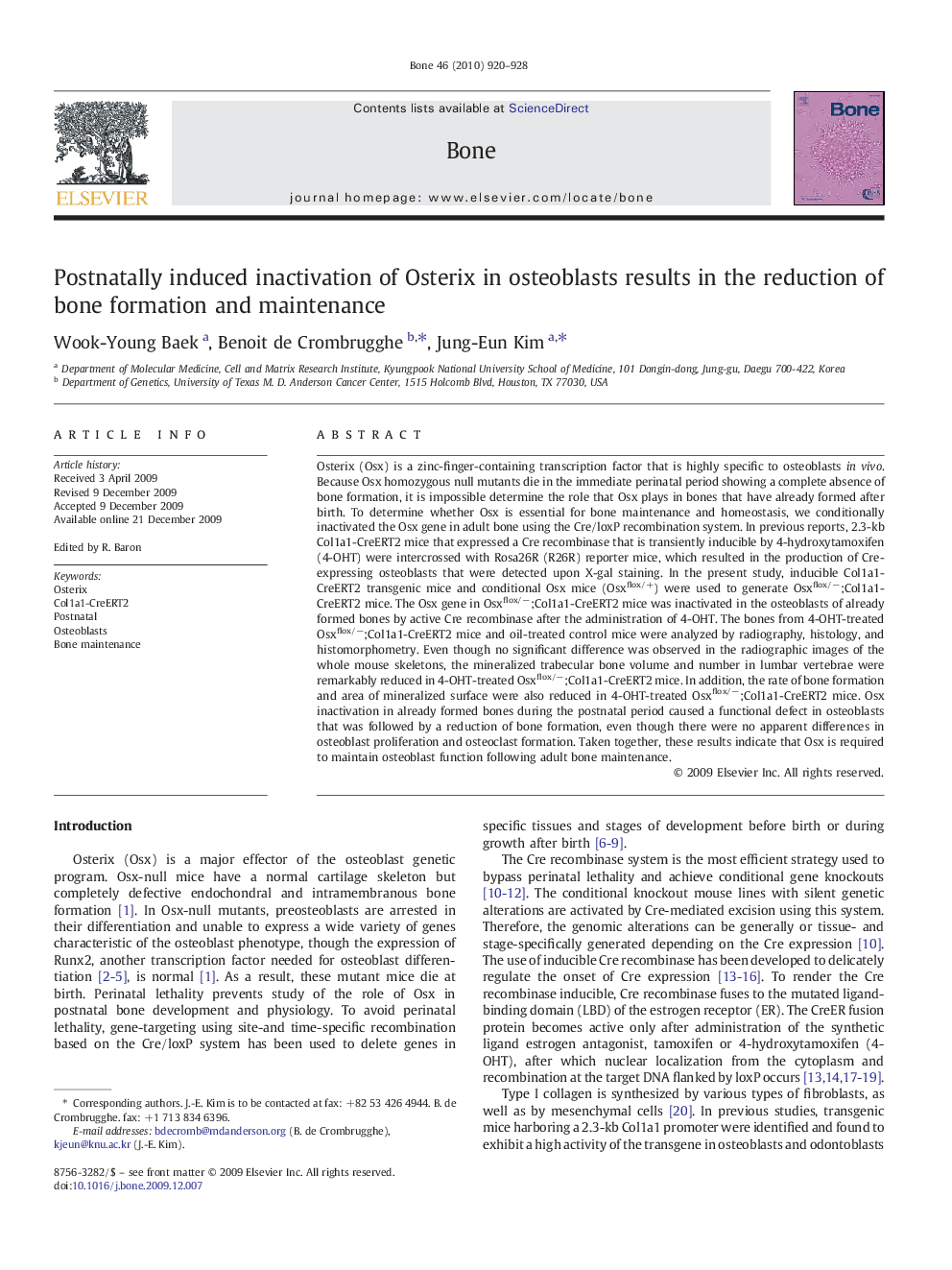| کد مقاله | کد نشریه | سال انتشار | مقاله انگلیسی | نسخه تمام متن |
|---|---|---|---|---|
| 2781081 | 1153313 | 2010 | 9 صفحه PDF | دانلود رایگان |

Osterix (Osx) is a zinc-finger-containing transcription factor that is highly specific to osteoblasts in vivo. Because Osx homozygous null mutants die in the immediate perinatal period showing a complete absence of bone formation, it is impossible determine the role that Osx plays in bones that have already formed after birth. To determine whether Osx is essential for bone maintenance and homeostasis, we conditionally inactivated the Osx gene in adult bone using the Cre/loxP recombination system. In previous reports, 2.3-kb Col1a1-CreERT2 mice that expressed a Cre recombinase that is transiently inducible by 4-hydroxytamoxifen (4-OHT) were intercrossed with Rosa26R (R26R) reporter mice, which resulted in the production of Cre-expressing osteoblasts that were detected upon X-gal staining. In the present study, inducible Col1a1-CreERT2 transgenic mice and conditional Osx mice (Osxflox/+) were used to generate Osxflox/−;Col1a1-CreERT2 mice. The Osx gene in Osxflox/−;Col1a1-CreERT2 mice was inactivated in the osteoblasts of already formed bones by active Cre recombinase after the administration of 4-OHT. The bones from 4-OHT-treated Osxflox/−;Col1a1-CreERT2 mice and oil-treated control mice were analyzed by radiography, histology, and histomorphometry. Even though no significant difference was observed in the radiographic images of the whole mouse skeletons, the mineralized trabecular bone volume and number in lumbar vertebrae were remarkably reduced in 4-OHT-treated Osxflox/−;Col1a1-CreERT2 mice. In addition, the rate of bone formation and area of mineralized surface were also reduced in 4-OHT-treated Osxflox/−;Col1a1-CreERT2 mice. Osx inactivation in already formed bones during the postnatal period caused a functional defect in osteoblasts that was followed by a reduction of bone formation, even though there were no apparent differences in osteoblast proliferation and osteoclast formation. Taken together, these results indicate that Osx is required to maintain osteoblast function following adult bone maintenance.
Journal: Bone - Volume 46, Issue 4, April 2010, Pages 920–928